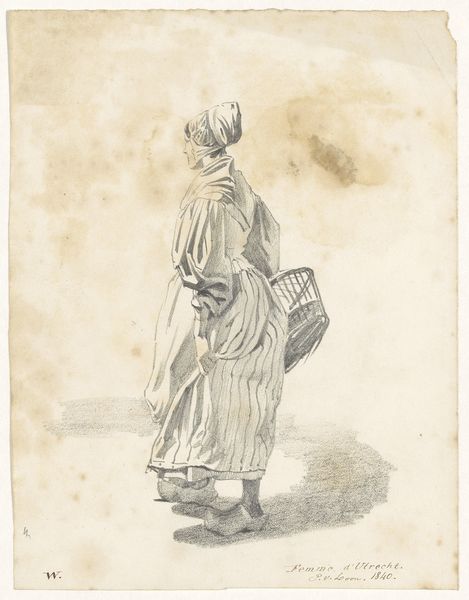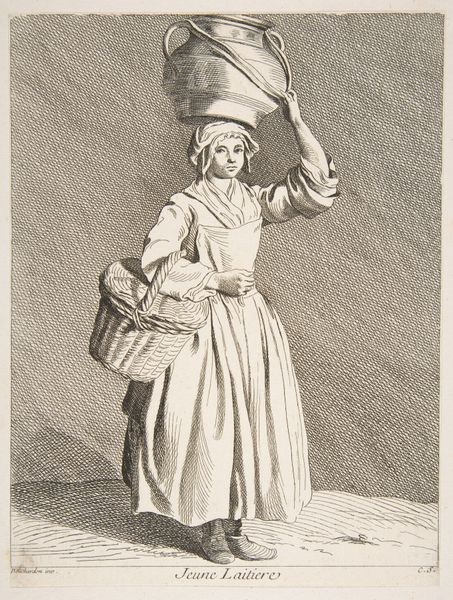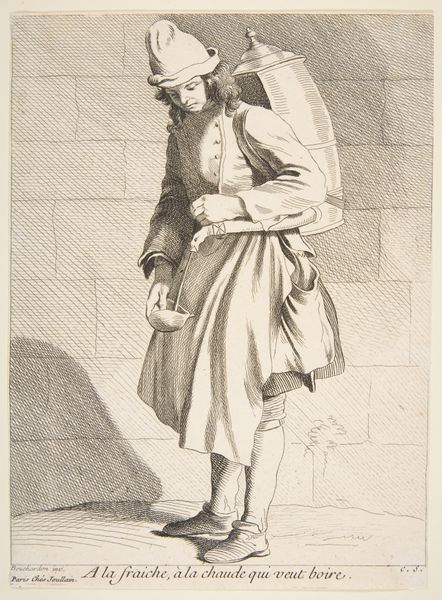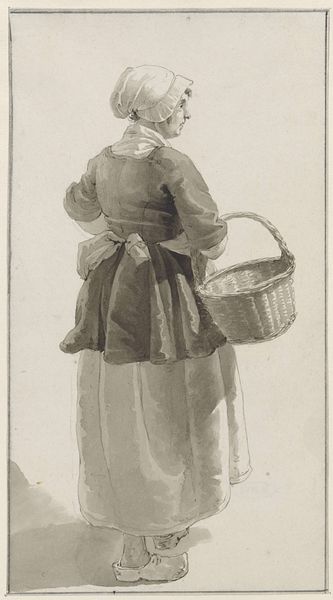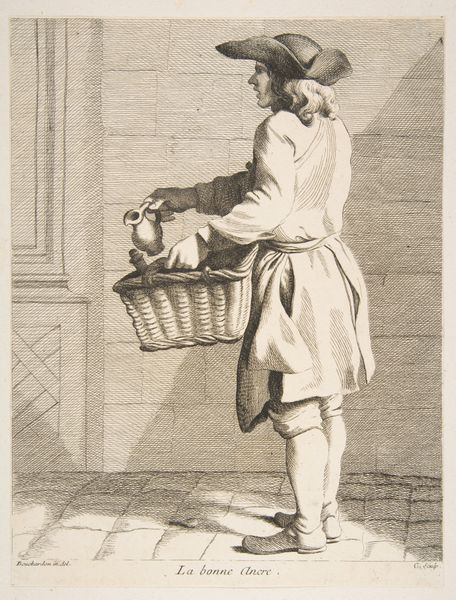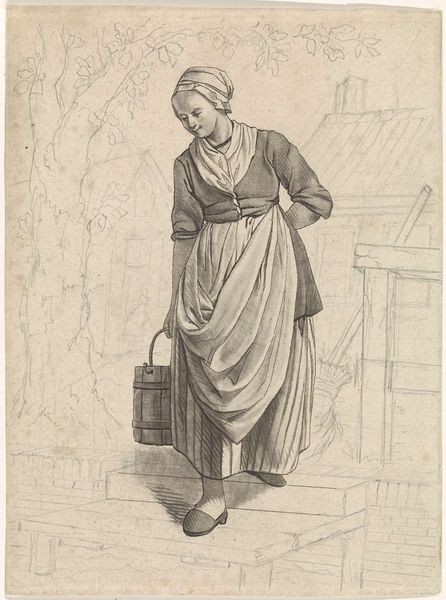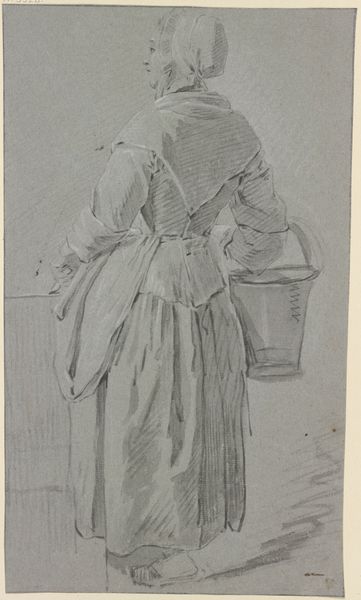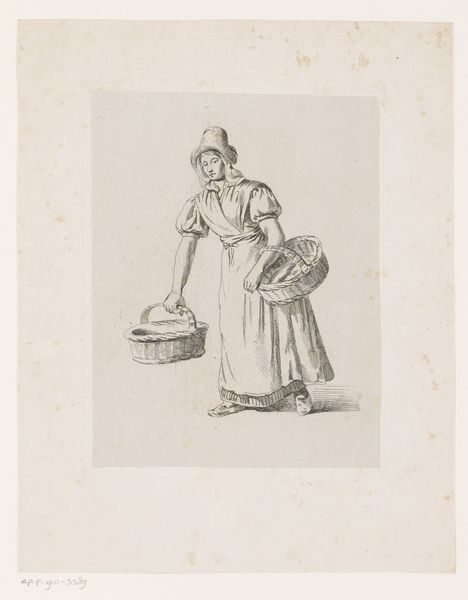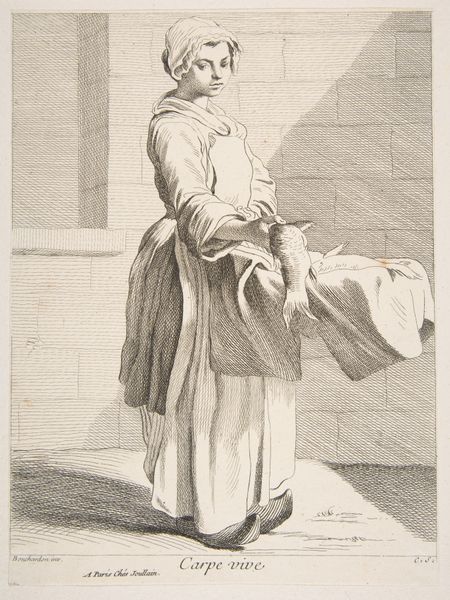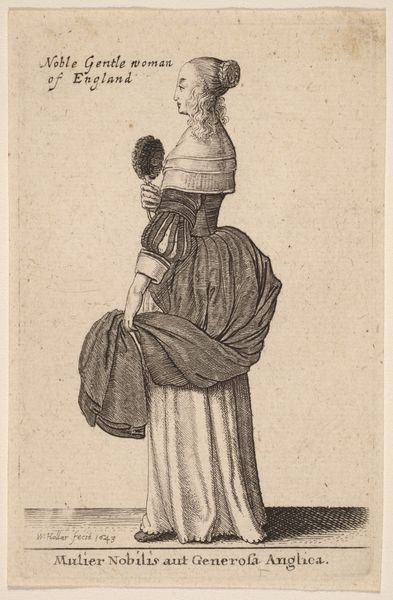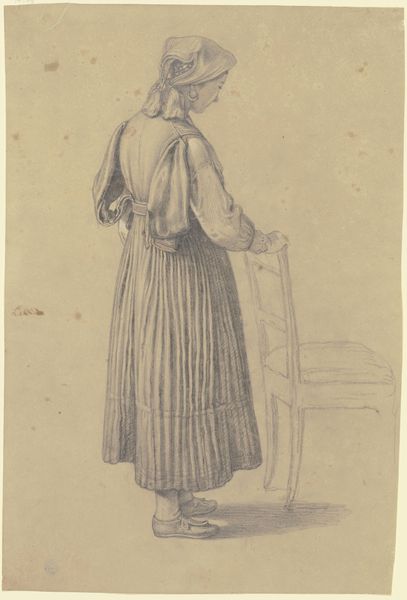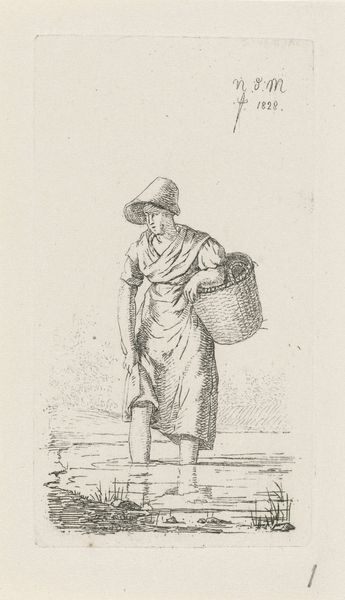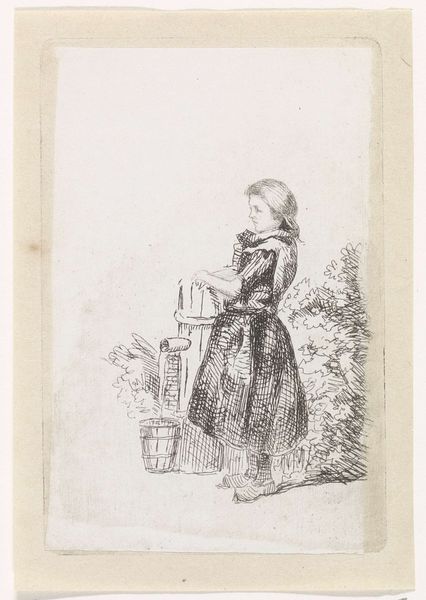
drawing, print, engraving
#
portrait
#
drawing
#
baroque
# print
#
figuration
#
portrait drawing
#
genre-painting
#
engraving
Dimensions: Sheet: 9 1/8 × 6 5/8 in. (23.2 × 16.8 cm) Image: 8 13/16 x 6 9/16 in. (22.4 x 16.7 cm)
Copyright: Public Domain
Curator: Before us we have “Walnut Seller”, a print created by Anne Claude Philippe Caylus in 1738. It’s currently held at the Metropolitan Museum of Art. Editor: Immediately striking is the figure’s almost defiant gaze as she looks back over her shoulder. There's a boldness there that contradicts the seeming simplicity of the scene. Curator: That's interesting. Genre paintings of this period often played with representing everyday life, sometimes idealizing it or injecting morality. This piece feels more like a study of labor and the urban experience. What do you think about her garb? Editor: It’s very suggestive. While ostensibly representing a commoner, there’s something carefully composed about the way her dress drapes. The drape calls into question representations of class and female identity. Is she being “othered”? Is her social role being romanticized? Curator: We need to look at the artistic currents of the time. The Rococo period, with its ornate details and aristocratic subjects, was starting to wane. There was growing interest in representing common people. How does that impact you? Editor: That makes sense given that gaze again. It's almost as if she is resisting the artist’s interpretation, and more broadly society’s assumptions, creating a space for the real woman underneath to emerge. Curator: Certainly. The very act of depicting this Walnut Seller, elevating a tradeswoman to art, reflects the shifts in social and political values. Editor: To me it seems less a sympathetic portrait and more about objectification of the female under the guise of portraiture, because who is this image for if not to serve a wealthy patron looking to have her own class-based power relations legitimized by hanging this work on the wall? Curator: A vital point. And those nuances remind us how images serve particular audiences and what their roles can be within societal norms of class, gender, and status. Editor: Absolutely. This small engraving really invites us to challenge representations of marginal people and interrogate the dynamics embedded within even the most seemingly innocent portrait.
Comments
No comments
Be the first to comment and join the conversation on the ultimate creative platform.

